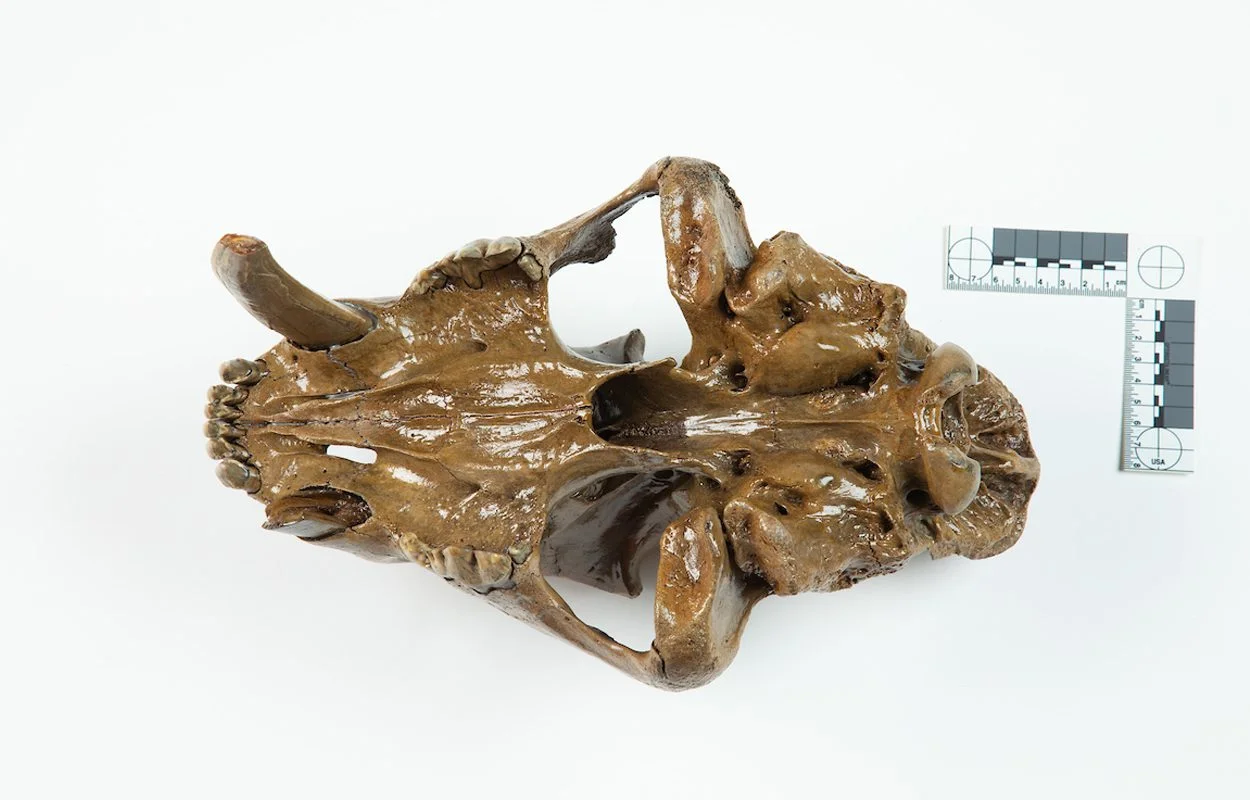The discovery of a sabertoothed cat skull in southwest Iowa, United States, is the first evidence of the prehistoric predator roaming the state at the end of the Ice Age between 13,605 and 13,460 years ago.
The sabertoothed cat (Smilodon) is one of the best-known genera of the machairodont, an extinct subfamily of carnivoran mammals of the family Felidae (true cats). They are popularly referred to as “sabertoothed tigers”, although they are not closely related to tigers (Panthera).
The genus was named in 1842 based on fossils from Brazil; the generic name means “scalpel” or “two-edged knife” combined with “tooth”.
Researchers discovered the remarkably well-preserved skull in Page County, southwest Iowa, offering new insights into the species before its extinction roughly 12-13,000 years ago.
The skull belonged to a subadult (2-3 years old), which based upon comparisons to skulls from the Rancho La Brea tar pits in Los Angeles, indicates that it was a male that weighed around 249 kg.
Matthew Hill, an associate professor of archaeology at Iowa State, said: “The skull is a really big deal. Finds of this animal are widely scattered and usually represented by an isolated tooth or bone. This skull from the East Nishnabotna River is in near perfect condition. It’s exquisite.”
In a study published in the journal Quaternary Science Reviews, a team from the Northwest Missouri State University used radiocarbon dating which determined that the cat died at the end of the Ice Age between 13,605 and 13,460 years ago. This makes the specimen one of the last known sabertoothed cats before the planetary temperatures rose causing glaciers to recede.
According to the researchers, southwest Iowa at the time was a parkland with patches of trees interspersed with grassy openings. Sabertoothed cats would have lived alongside other extinct animals such as dire wolf, giant short-faced bear, long-nosed peccary, flat-headed peccary, stag-moose, muskox, and giant ground sloth, and maybe a few bison and mammoth.
How the sabertoothed cat died is not clear, but a broken canine might offer a clue. The study speculates that the animal was seriously injured while attacking prey, which ultimately proved fatal within days of the trauma.
Header Image Credit : Iowa State University





